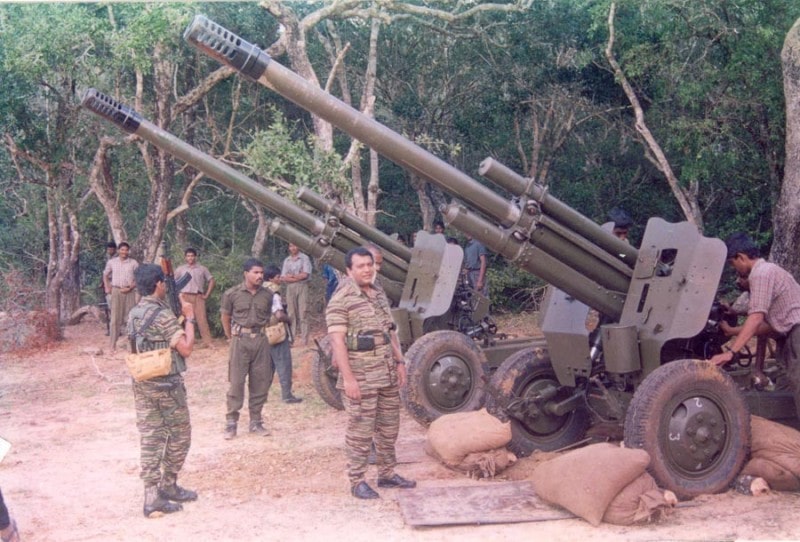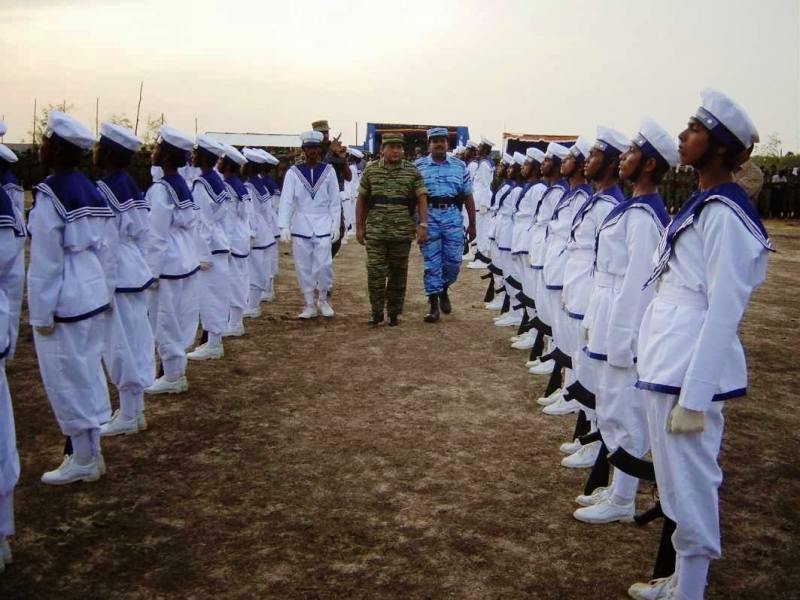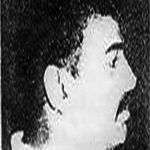Velupillai Prabhakaran Age, Death, Caste, Wife, Children, Family, Biography & More
| Bio/Wiki | |
|---|---|
| Names earned | • Thamizh Thesiya Thalaivar (Tamil National Leader) • Sooriyathevan (Sun God) [1]DBS Jeyaraj • Karikalan (named after the famous Chola king known for his administration and courage) |
| Other name | Pirapaharan |
| Nickname(s) | • Thambi [2]Daily FT • Anna • Thambiyanna |
| Profession | Rebel leader |
| Infamous for | • Being the leader of the Liberation Tigers of Tamil Eelam (LTTE) • Being the mastermind of Rajiv Gandhi's assassination in 1991 |
| Physical Stats & More | |
| Height (approx.) | in centimeters- 170 cm in meters- 1.70 m in feet & inches- 5’ 7” |
| Eye Colour | Dark Brown |
| Hair Colour | Salt and Pepper |
| Personal Life | |
| Date of Birth | 26 November 1954 (Friday) |
| Birthplace | Valvettithurai, Dominion of Ceylon (now Sri Lanka) |
| Date of Death | • Source 1: 18 May 2009 [3]The Quint • Source 2: 19 May 2009 [4]LankaWeb |
| Place of Death | Nandikadal, Mullaitivu District, Sri Lanka |
| Age (at the time of death) | 54 Years |
| Death Cause | Killed in a firefight with the Sri Lankan Army [5]LankaWeb |
| Zodiac sign | Sagittarius |
| Nationality | • Ceylonese (1954-1972) • Sri Lankan (1972-2009) |
| Hometown | Valvettithurai, Jaffna district, Sri Lanka |
| School | • Government College, Batticaloa • Chidampara College, Valvettithurai |
| Educational Qualification | He dropped out of school to partake in underground activities. [6]The Times of India |
| Religion | Atheist |
| Caste | Karaiyar Note: The Karaiyars are a coastal community that originated from the southern parts of India. They began migrating to Sri Lanka in the second century BCE. |
| Food Habit | Non-vegetarian |
| Hobbies | Reading and Cooking |
| Relationships & More | |
| Marital Status (at the time of death) | Married |
| Marriage Date | 1 October 1984 |
| Family | |
| Wife/Spouse | Mathivathani Erambu (deceased; May 2009) Note: The Sri Lankan authorities found the dead bodies of Prabhakaran's wife and daughter on 20 May 2009. |
| Children | Son(s)- 2 • Charles Anthony (elder, head of the Information and Technology department of the LTTE, died on 18 May 2009) 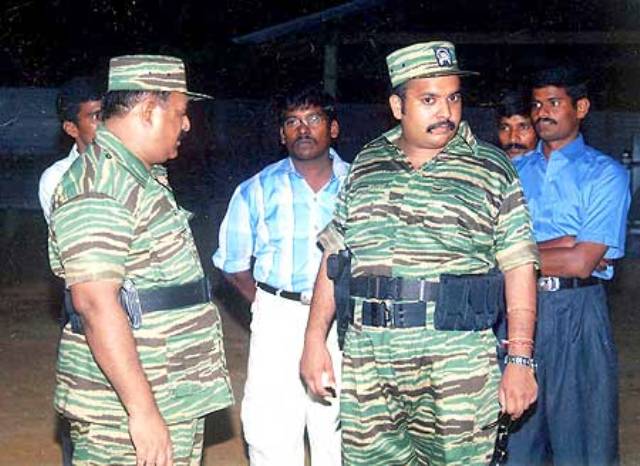 • Balachandran Prabhakaran (younger, reportedly shot dead by the Sri Lankan Army in May 2009)  Daughter- 1 • Duvaraga (deceased; May 2009)  |
| Parents | Father- Veerasamy Thiruvengdam Velupillai (district lands officer, died on 10 January 2010)  Mother- Vallipuram Parvathy (deceased)  |
| Siblings | Brother- 1 • Manoharan Velupillai  Sister(s)- 2 • Jagdeswari Mathiyaparanam • Vinodini Rajendran (moved to Toronto, Canada in 1997) 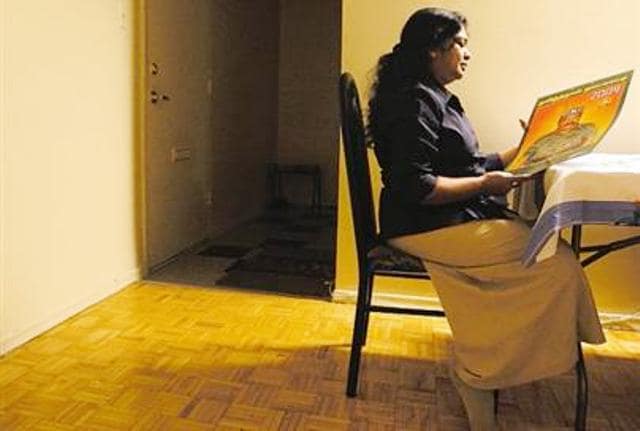 Note: Prabhakaran was the youngest child of his family. |
| Favourites | |
| Food | Pittu, Coconut Sambol, Fried Shrimp |
| Cuisine | Chinese |
| Book | Ponniyin Selvan |
Some Lesser Known Facts About Velupillai Prabhakaran
- Velupillai Prabhakaran was a Sri Lanka-born Tamil nationalist who founded the Liberation Tigers of Tamil Eelam (LTTE), a militant organisation, in 1975. He ordered the assassination of Rajiv Gandhi, the former Prime Minister of India, in 1991. At 54, he was killed in action during a gunfight with the Sri Lankan Army in May 2009.
- Velupillai Prabhakaran was born into a Hindu Tamil family in Sri Lanka. He belonged to the Thirumeni Kudumbam (Thirumeni Family). His ancestors constructed the Hindu temple of Sivan at Valvettithurai.
- Prabhakaran was motivated by V. Navaratnam, his class 8 teacher, to pick up arms against the Sri Lankan authorities for implementing anti-Tamil laws in Sri Lanka. In an interview, he said that he and some other students used to listen to the speeches given by their teacher. Talking about it, he said,
Mr. Vernugopal, a Tamil teacher from my village, used to din into our years that the Tamils should take up arms. He was an ardent supporter of the Federal Party’s Youth Front; later, feeling that the party was not militant enough, He teamed up with Mr. V. Navaratnam and was one of the founders of the ‘Suyadchi Kazham’ (Self-Rule Party). It is he who impressed on me the need for armed struggle and persuaded me to put my trust in it. My village used to face military repression daily. Hence even as a child I grew to detest the Army. This hatred of military repression, combined with Mr. Venugopal’s persuasive stress on armed struggle and the thirst for liberation generated an inner dynamism within me and friends of my age flocked behind Mr. Vernugopal.”
- As a student, Prabhakaran participated in several anti-government demonstrations.
- Prabhakaran became a member of a militant organisation named Thangathurai-Kuttimani group in 1969. Owing to his superior organisational and leadership qualities, he began receiving important positions and tasks.
- In 1970, he joined a Tamil student union named Tamil Manavar Peravai, founded to demand and fight for equal rights for Tamil students.
- Prabhakaran was part of a black flag protest that was organised in 1971 when the Minister of Posts and Telecommunications was on an official visit to Velanai.
- Later, Prabhakaran joined a youth forum named Tamil Ilaynar Peravai (TIP). As its member, he took part in several standardisation debates.
- In an interview, Prabhakaran said that he left his parents’ house in 1972 after the Sri Lankan police came searching for him due to his involvement in underground activities. Talking about it, he said,
The cops came knocking at my parent’s front door. My mother opened the door and they (cops) barged into my house looking to arrest me. Luckily, I was not at home then and hence evaded capture. The cops while leaving my house bragged about capturing me someday to my parents and siblings. After this, I knew I had to leave and I asked my parents not to expect anything from me in future as I have dedicated my life to the Tamil cause.”
- On 22 May 1972, Velupillai Prabhakaran, with some like-minded people, founded a Tamil militant organisation named Tamil New Tigers (TNT).
- In an interview, Prabhakaran said that during the early 1970s, he and his friends wanted to buy a pistol, which cost Rs 150. He further said that he had to sell his gold ring as they could only accumulate Rs 40.
- The TNT undertook its first militant activity by hurling homemade bombs at the Duraiappah Stadium, where many people were attending a carnival. TNT’s action caused massive destruction to the stadium.
- In 1974, Prabhakaran masterminded the bombing of a political rally of Sirimavo Bandaranaike at Jaffna city.
- On 27 July 1975, the TNT conducted its first political killing by assassinating Alfred Duraiappah, the then-mayor of Jaffna, while he was visiting a temple at Ponnaalai. A gunman in the temple killed Alfred. Later, the Sri Lankan police issued a lookout notice to capture the members. While claiming responsibility for the killing, the TNT said that the assassination was carried out to avenge the death of the Tamils, killed by the police in 1974 during the Tamil conference.
- Later, Prabhakaran directed several militant operations like robbery and target killings.
- On 5 May 1976, after implementing several structural changes in TNT, Prabhakaran renamed the TNT as Liberation Tigers of Tamil Eelam (LTTE). The LTTE was established to start guerilla warfare against the Sri Lankan government.
- On 14 February 1977, on Prabhakaran’s orders, the LTTE shot and killed P. C. Karunandhi, a government official appointed to investigate the criminal activities undertaken by the LTTE.
- M. Canagaratnam, a Sri Lankan Tamil politician, was shot and killed on 24 January 1978 by the LTTE at Prabhakaran’s command. He was murdered for becoming a member of the United National Party (UNP) by leaving Tamil United Liberation Front (TULF).
- On 5 December 1978, the LTTE stole approximately $1 million in cash by raiding the People’s Bank at Nallur. During their raid, they also killed a constable of the police force.
- LTTE gained prominence in July 1983 after it ambushed a patrolling party of the Sri Lankan Army, codenamed Four Four Bravo. The ambush killed 13 members, including an officer, out of the 15 members of the team. The LTTE later issued a statement and said that the patrolling party was attacked as Sri Lankan soldiers had abducted three Tamil schoolgirls and sexually assaulted them a few days before. Seeking revenge for their dead comrades, the troops from the Palaly military camp attacked innocent Tamil civilians, leading to the death of 51 civilians and the destruction of Tamil-owned shops. After the July 1983 incident, there were widespread riots in Sri Lanka, which left more than 3k Tamils dead and more than 150k homeless. The riots marked the formal beginning of the 25-year-long Sri Lankan civil war, leading to massive destruction of life and material.
- After the beginning of the civil war, Prabhakaran began increasing the strength of the LTTE by recruiting women and children. He also started smuggling sophisticated equipment such as artillery batteries, assault rifles, and more. Several sources reported that the Cuban Army provided military and tactical training to him in Cuba.
- According to several sources, Prabhakaran, along with high-ranking rebels of the LTTE, went to India, where they received military training from Research and Analysis Wing (R&AW) at Chakrata, Uttarakhand, from 1983 to 1987. India, however, stopped supporting the LTTE after the Indian and Sri Lankan governments signed an accord in 1987. While many Tamil militant groups accepted the agreement, LTTE did not.
- Velupillai Prabhakaran realised that sea routes must be secured to continue smuggling arms and ammunition to fight against the government forces; therefore, in 1984, Prabhakaran founded the water wing of the LTTE, Sea Tigers. At its peak, the Sea Tigers had many gunboats, troop carriers, fast attack crafts, and patrol vessels. They also had suicide bombing vessels in their inventory.
- To assassinate important and valuable targets, Prabhakaran decided to use suicide bombers; therefore, in 1987, the LTTE founded the Black Tigers for suicide bombing missions. Women and children filled a majority of the ranks in Black Tigers. Before sending the suicide bombing cadres to their assignment, Prabhakaran honoured them by organising a meal.
- Prabhakaran made a speech in public in August 1987 after India sent the Indian Peace Keeping Force (IPKF) to Sri Lanka in July 1987. More than 100k people attended his rally, which marked a new beginning for Tamil nationalism.
- To inflict heavy casualties on the IPKF, Prabhakaran devised a strategy according to which the LTTE disseminated false information to the informers of the IPKF that Prabhakaran was present in a football stadium in Jaffna. When the IPKF arrived at the football stadium, the LTTE cadres, who had laid an ambush there, opened fire at the Indian troops, resulting in heavy casualties on the IPKF. The IPKF fought against the LTTE from 1987 to 1990 and lost 1,165 troops in Sri Lanka.
- On 21 May 1991, the former Prime Minister of India, Rajiv Gandhi, was killed by a suicide bomber named Kalaivani Rajaratnam while attending a public meeting at Sriperumbudur, near Chennai. The Black Tigers undertook the assassination on Prabhakaran’s orders; however, Prabhakaran never publically took responsibility for masterminding Rajiv’s death. The Madras High Court convicted Prabhakaran and gave the death penalty to him; however, the court dropped the case against him following Prabhakaran’s death in May 2009. Whenever journalists asked Prabhakaran about his involvement in the killing of Rajiv Gandhi, Prabhakaran said that it was an “unfortunate event” and that “there was no need to dig into an event that occurred a long time ago.” In 2011, Kumaran Pathmanathan, former treasurer of the LTTE, while asking for forgiveness from the Indians, during an interview, revealed that Rajiv Gandhi was killed at Prabhakaran’s command. He said,
I want to say to the Indian people and especially to the Gandhi family… I want to apologise for Prabhakaran’s mistake. Please forgive us. We beg you…. Sorry for all this. We know the feelings of the son (Rahul) of Rajiv Gandhi…. How father and daughter are attached. Rajiv’s assassination was well planned and done actually with Prabhakaran and (LTTE intelligence chief Pottu Amman). Everyone knows the truth.”
- The LTTE, on Prabhakharan’s orders, killed the then President of Sri Lanka, Lankabhimanya Ranasinghe Premadasa, through suicide bombing.
- According to a 1990s report by the United Nations (UN), 40% to 60% of the LTTE rebels killed in action by the Sri Lankan forces were children below 18.
- Prabhakaran established The Bank of Tamileelam in the LTTE-controlled areas in 1994. The bank employed more than 100 employees and had six branches.
- In the late 1990s, the LTTE established its air wing and named it the Tamileelam Air Force (TAF).
- In 1998, the Voice Of Tiger, an LTTE-operated radio channel, claimed that their acquired new aircrafts were used to shower petals on the graves of the rebels killed in battle. The Sri Lankan government later dismissed the claims and said the LTTE was trying to do psychological warfare through its propaganda. Later, reports emerged that the LTTE acquired a tiger helicopter that was being used for aerial patrolling.
- In 1998, intelligence sources reported that the LTTE had constructed several airbases in their controlled territory for conducting aerial operations. An Unmanned Aerial Vehicle (UAV) captured several images of the landing strips built by the rebels.
- After the formation of the Air Tigers, the rebels acquired several aircrafts including Czech-made Zlín Z 43 light aircraft, R 44 Astro, two Australian-made AirBorne microlight aircraft, and several Bell and Tiger helicopters. The Zlín Z 43 were modified by the rebels to carry high-explosive bombs for conducting aerial raids on government installations.
- On 22 February 2002, the Sri Lankan government, led by Ranil Wickremesinghe, signed a Ceasefire Agreement (CFA) with the LTTE. In an interview, Ranil said that the only way to end the civil war was to peacefully solve the issues that led to the war. The Sri Lankan government and the LTTE signed the CFA in the presence of the then-Norwegian Ambassador Jon Westborg. After the signing of the agreement, both, the government and the LTTE, decided to immediately stop their aggressive military operations in the country against one another. The signing of the deal also led to the establishment of the Sri Lanka Monitoring Mission (SLMM), an international peace monitoring mission established under the aegis of the United Nations (UN). As a result of the agreement signing, Sri Lanka became peaceful and the influx of tourists in the country increased.
Many political observers were sceptical of the CFA as they believed that under the garb of CFA, the government and the LTTE were strengthening their stance, politically and militarily. A report submitted by the SLMM to the UN stated that the LTTE violated the CFA norms on 3830 occasions, while the Sri Lankan government violated the laid norms on only 351 occasions. The report also accused the LTTE of kidnapping and killing several Sri Lankan Army officers, including the then Chief of Intelligence Colonel Tuan Nizam Muthaliff. While talking about the CFA, former Minister of Foreign Affairs of Sri Lanka Lakshman Kadirgamar, told the media,
During the ceasefire period, the LTTE was infamous for using violent means including suicide bombers, smuggling in 11 shiploads of weapons, forcibly conscripting adults and children, torturing, extorting and denying democratic and fundamental rights to the trapped civilians within the illegally usurped territory.”
- Aiming to establish an Interim Self Governing Authority (ISGA) in the Amparai, Batticaloa, Jaffna, Kilinochchi, Mannar, Mullaitivu, Trincomalee, and Vavuniya districts, the LTTE sent a proposal to the Sri Lankan government in 2003. The proposal was not accepted as the Sri Lankan parliament was dissolved by President Chandrika Kumaratunga, leading to the fall of the national government.
- The LTTE received a setback in 2004, after Colonel Karuna, a trusted military commander of Prabhakaran, switched sides, surrendered to the Sri Lankan government, and started providing valuable information to the government regarding the vital installations of the LTTE.
- Lakshman Kadirgamar, the former Foreign Minister of Sri Lanka, was killed by the LTTE on 12 August 2005. For senselessly murdering Kadirgamar, the LTTE faced criticism from the international community.
- After that, the United States of America, the United Kingdom, Norway, and many others designated LTTE as a terrorist organisation.
- In 2006, the Mahinda Rajapaksa-led Sri Lankan government scrapped the peace accord signed between the LTTE and the UNP-led Government of Sri Lanka in 2002. Reportedly, the ceasefire was revoked after the LTTE violated the peace accord by attacking and killing many unarmed civilians and off-duty military personnel. In 2006, the LTTE attacked and captured a water reservoir named Mavil Aru and stopped the water supply in the eastern provinces of Sri Lanka, affecting more than 15,000 Sri Lankan citizens. After revoking the peace accord, the Sri Lankan military mounted a counter-offensive against the LTTE across Sri Lanka.
- In 2007, the Air Tigers conducted several combat missions and raided places such as Katunayake Air Force Base, Palali military base, and Colombo.
- In 2008, the LTTE was forced to leave their forwards posts in the Northern province of Sri Lanka and withdraw after around 250 LTTE-constructed bunkers and strongholds were captured and destroyed by the armed forces in its offensive.
- On 16 July 2008, the LTTE lost its naval base in Vidattaltivu after the Sri Lankan forces attacked it. The capturing of the base crippled the supply route of the LTTE as it was vital for smuggling arms, ammunition, and equipment for the rebels to continue fighting the civil war.
- On 2 September 2008, the Sri Lankan forces captured Mallavi, a town considered to be the operational hub of the LTTE.
- In the same year, Prabhakaran was seen for the last time when he gave a speech to his followers and said that the Government of Sri Lanka was on its way to destruction as it had adopted an aggressive approach to end the civil war.
- Owing to sound tactical planning, the Sri Lankan army had regained control of a majority of the areas that were being controlled by the LTTE by 2009.
- By May 2009, the Sri Lankan Army managed to surround the remaining rebels of the LTTE, including Prabhakaran, on a 1.92 square kilometre of land. During the later phase of the civil war, the LTTE’s air and water wings were annihilated by the armed forces.
- By 18 May 2009, the LTTE was left with approximately 250 rebels as most of their fighters were dead, captured, or had surrendered to the authorities.
- In May 2009, the Sri Lankan forces received information that the remaining LTTE rebels, including Prabhakaran, would try and break the defences established by the army in groups of thirty. On 18 May 2009, many media channels began the dissemination of fake news that Prabhakaran was killed while he was trying to escape in an ambulance after it was struck by a rocket fired by a soldier. The media also claimed that his body was burnt due to the rocket attack.
- Prabhakaran’s son, Charles Anthony, was killed while fighting against the Sri Lankan forces on 18 May 2009. The Sri Lankan troops found $12 million from him.
- The date of Prabhakaran’s death is a matter of controversy as many sources claim that he was killed in action on 18 May 2009, while some sources claim that he died on 19 May 2009. [7]The Quint According to the Sri Lankan Army’s official statement, the army engaged Prabhakaran and his led rebels at 7.30 am. The gunfight took place between them till 9.30 am, and Prabhakaran’s body was discovered by a sergeant of the Sri Lankan Army, floating in the mangroves of Nandikadal in Mullaitivu District. [8]LankaWeb Following his death, Lt Gen Sarath Fonseka, the then Sri Lankan Army commander, briefed the media at 12.30 pm and said,
On 18th (May) night, the topmost LTTE leadership divided itself into three different groups. They attacked our forward defence line along the Nandikkadal lagoon and did manage to break through. But they had reckoned without our second and third tier defences. These three groups were led by Jeyam, Pottu Amman and Soosai. Prabhakaran and his closest bodyguards thought they had managed to escape, but in reality all these LTTE fighters, around 250 of them, had got trapped between our first and the second defence lines. After fierce fighting that night, almost all the top leadership got killed in the area. We discovered Prabhakaran’s body on the 19th morning.”
- The Sri Lankan government declared victory over the LTTE on 19 May 2009 following which President Mahinda Rajapaksa delivered a speech in the parliament and said,
We have liberated the whole country from LTTE’s terrorism. Our intention was to save the Tamil people from the cruel grip of the LTTE. We all must now live as equals in this free country. We must find a homegrown solution to this conflict. That solution should be acceptable to all the communities. We have to find a solution based on the philosophy of Buddhism.”
- To determine his identity, Prabhakaran’s dead body was sent for a post-mortem on 24 May 2009. The government also conducted DNA testing by matching his DNA with his son, Charles Anthony’s. Colonel Karuna, the surrendered LTTE commander, also identified his body. [9]The Times of India
- In the same year, Prabhakaran’s photo of him watching his death news on TV was sent to France 24 by a Tamil news channel as proof that Prabhakaran was still alive; however, the evidence was trashed by France 24 as it noted that the photo was edited. [10]The France 24 Observers
- In 2009, an Indian politician named Vaiyapuri Gopalsamy (aka Vaiko), during an interview, claimed that the LTTE chief was alive. [11]Hindustan Times
- On 13 February 2023, an Indian Tamil nationalist leader and former congressman named P. Nedumaran said that Prabhakaran was alive and would soon make a public appearance and talk about his plans for restarting the LTTE. He further said that not only Prabhakaran but his family is also alive; however, his claims were dismissed by the Government of Sri Lanka. [12]The Indian Express While giving an interview, Nedumaran said,
I want to say that Prabhakaran is still alive and doing well. I am happy to tell the Tamil diaspora about that. All the rumours and questions about him might be thus answered. He will announce his next plan (to liberate) Tamil Eelam very soon, by himself.”
- While giving an interview, Prabhakaran said that he was motivated to start a rebellion against the Sri Lankan authorities after reading about the armed freedom struggle of Indian freedom fighters like Bhagat Singh and Subhash Chandra Bose.
- To avoid becoming a Prisoner of War (POW), Prabhakaran kept a cyanide capsule handy by attaching it to a black string and wearing it around his neck.
- Prabhakaran did not consume alcohol or tobacco. He also passed an order that made intoxication a punishable offence for the LTTE cadres. He also had a rule asking the LTTE cadres to follow purity; however, he changed it after he got married in 1984 and allowed the rebels to get married only after serving for five years.
- After Prabhakaran’s death, five torched cars, including a Limousine, were discovered by the Sri Lankan troops while conducting mopping operations.
- Reportedly, Prabhakaran was undergoing treatment for diabetes as troops recovered medications for diabetes and insulin from him after his death.
- LTTE had a tiger as its symbol, which was also the symbol of the Chola empire. Prabhakaran used the symbol as the Tamils traced their roots back to the Chola empire.
- Prabhakaran, in an interview, said that he developed the hobby of reading as a child as he frequently visited a local library to borrow books. He was also passionate about cooking and believed that a good guerilla fighter must possess good cooking skills. He used to help prepare meals for the LTTE cadres in the kitchens.
- Prabhakaran had subscribed to many international news magazines to teach the LTTE cadres about the then prevailing geo-political scenario in the world by translating English magazines into Tamil.
- Prabhakaran was a follower of the Marxist-Leninist ideologies and wanted to base Tamil society on their principles after creating a separate nation for the Tamils in Sri Lanka. He also wanted to create a secular society, without prioritizing one religion over the other.
- As a child, he liked playing field sports like soccer and volleyball.
- Prabhakaran once told a journalist that he was trained by the American action film star Clint Eastwood after the journalist asked him where did he get his military training.
- Whenever the LTTE held a press conference, they used to refer to Velupillai Prabhakaran as the Prime Minister and President of the Tamil Eelam.
- Indian and Sri Lankan films like Methagu (2021), Prabhakaran (2008), and Captain Prabhakaran (1991) have been made on Velupillai Prabhakaran’s life.
References/Sources:







